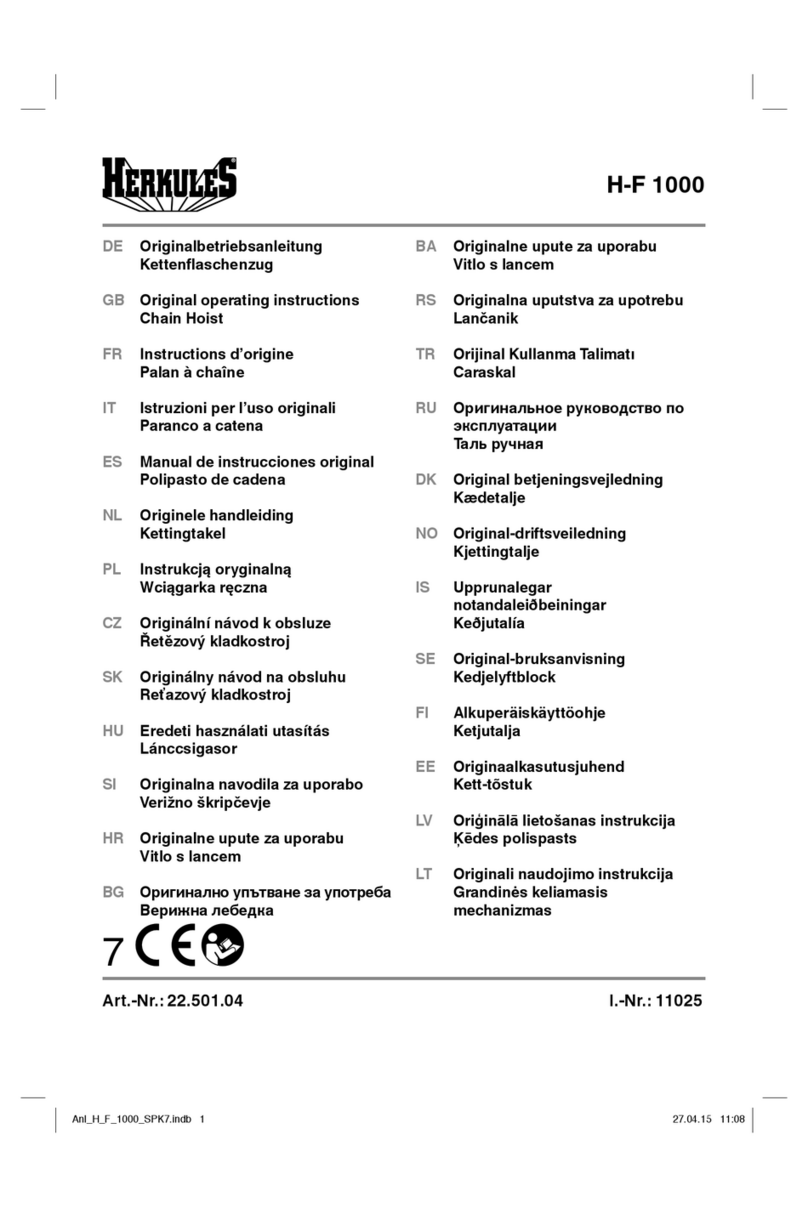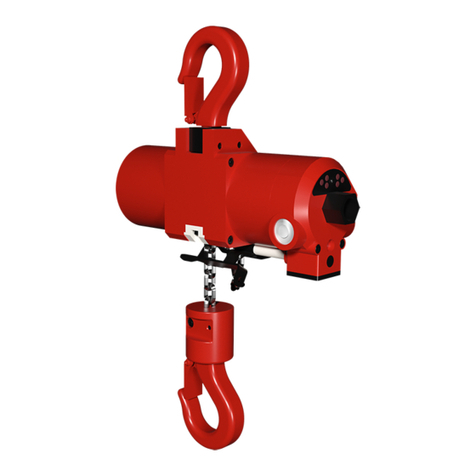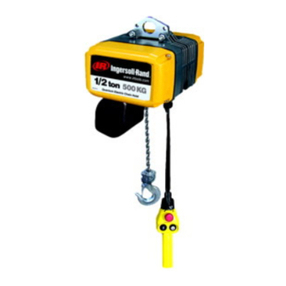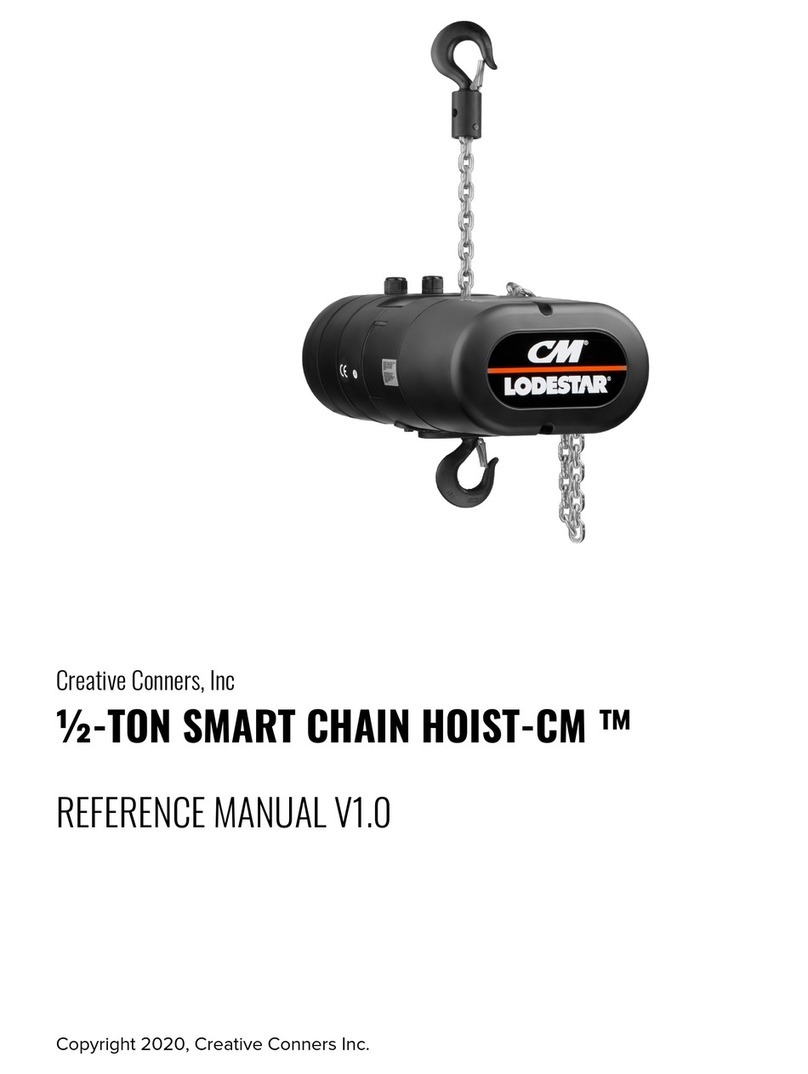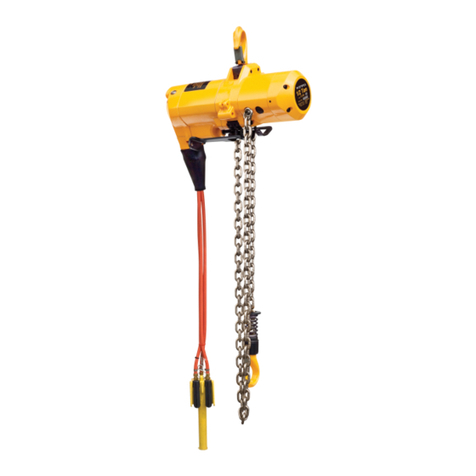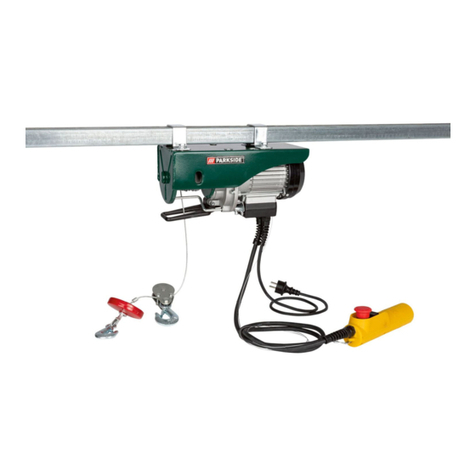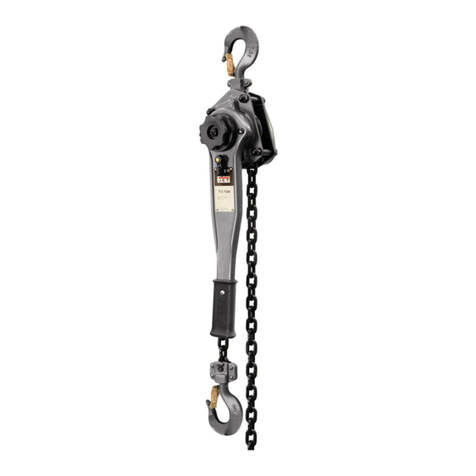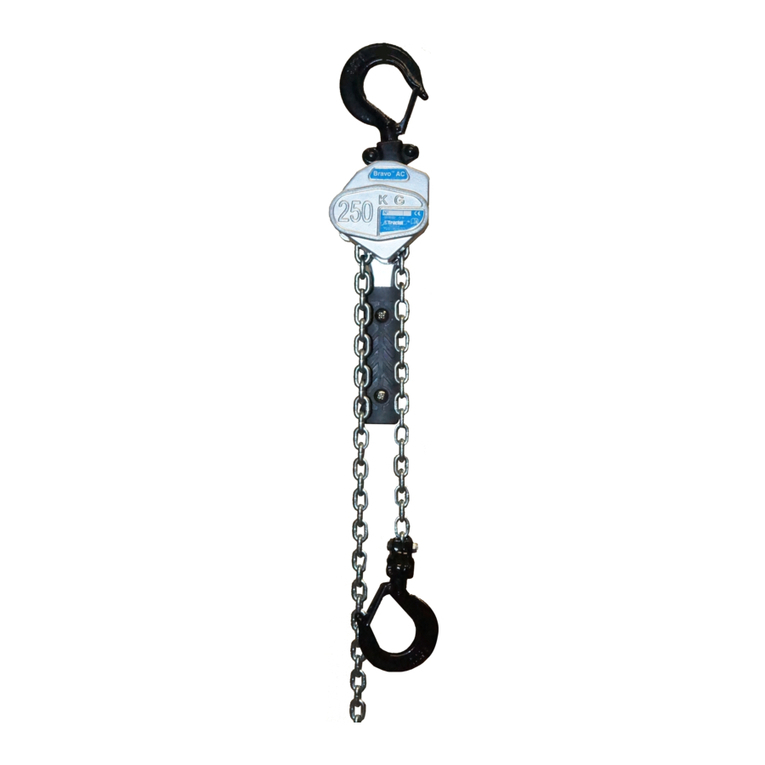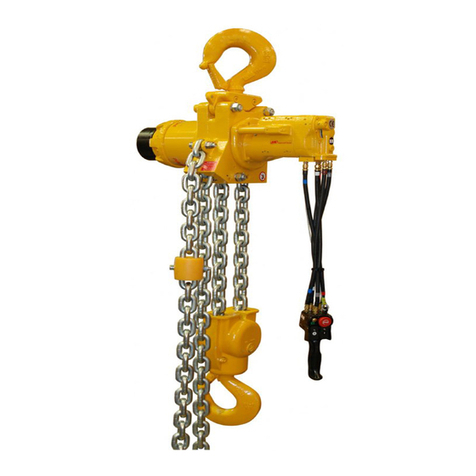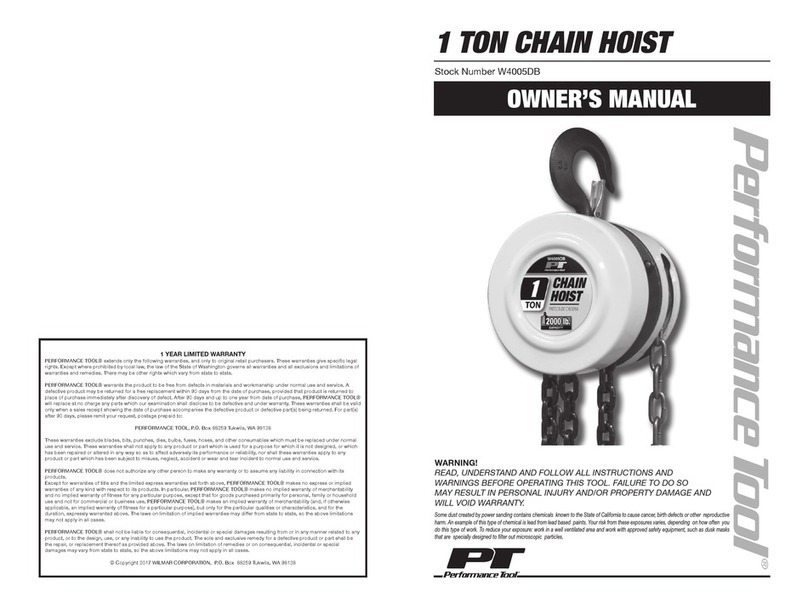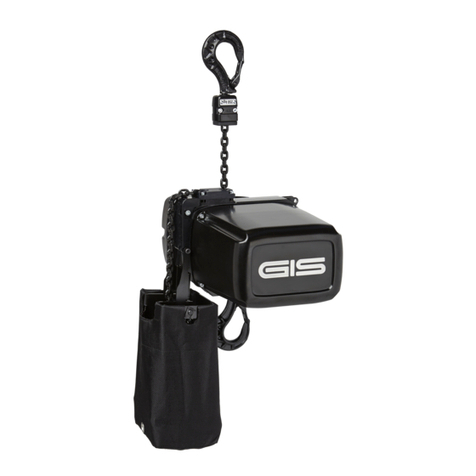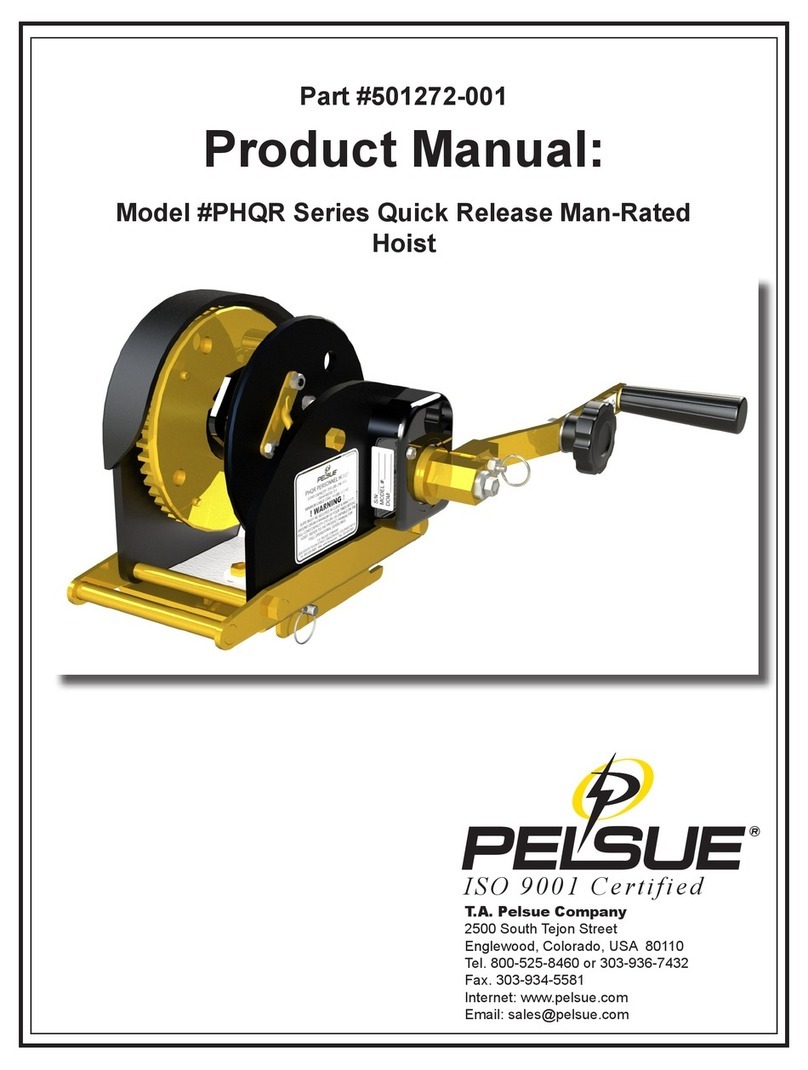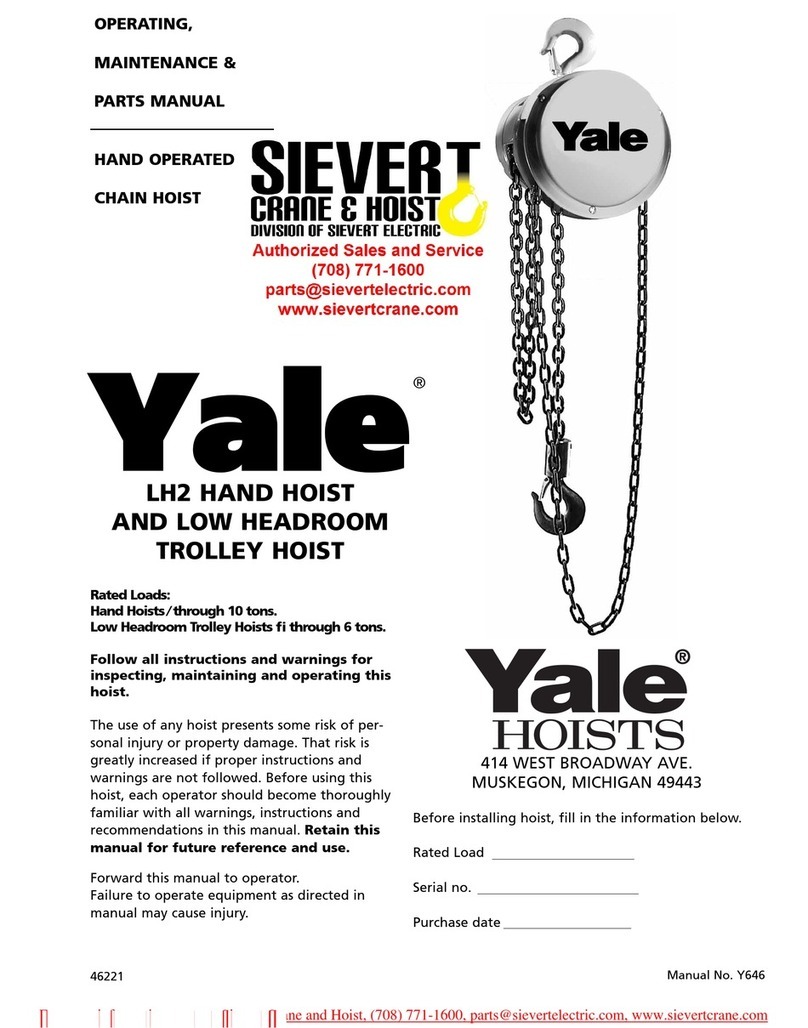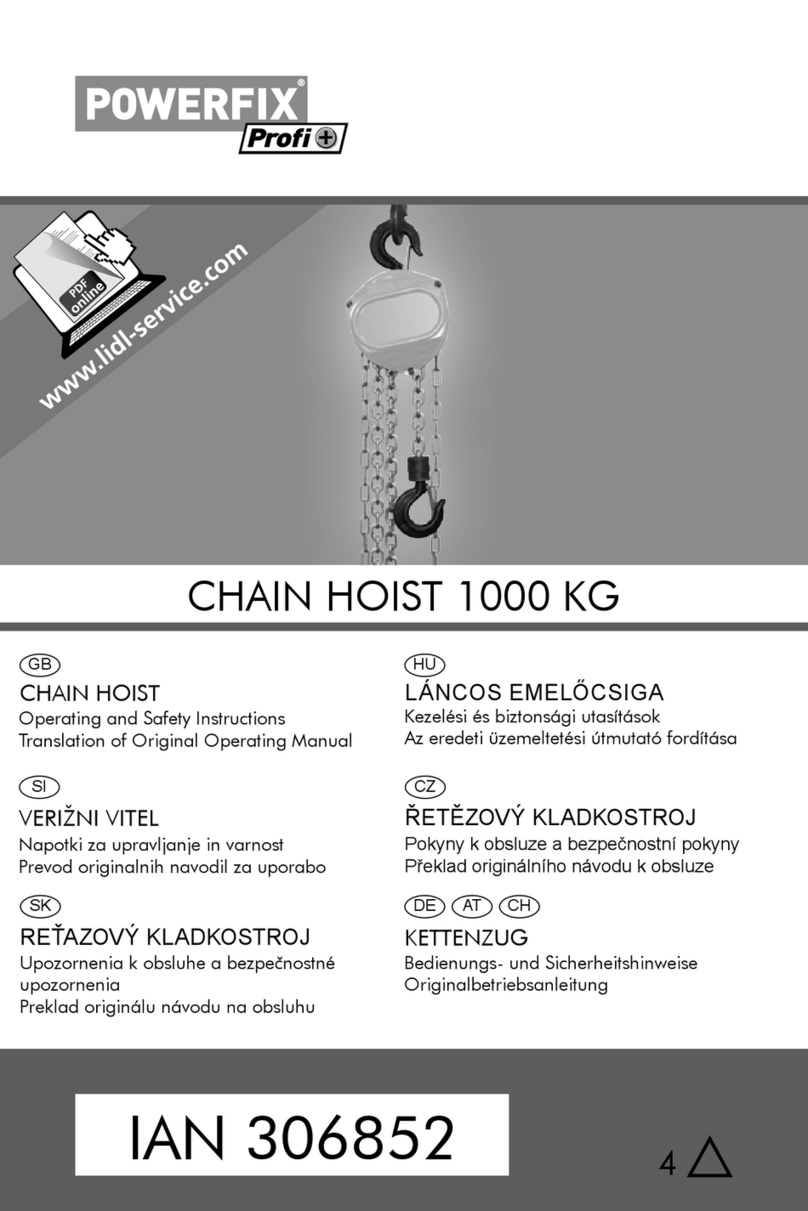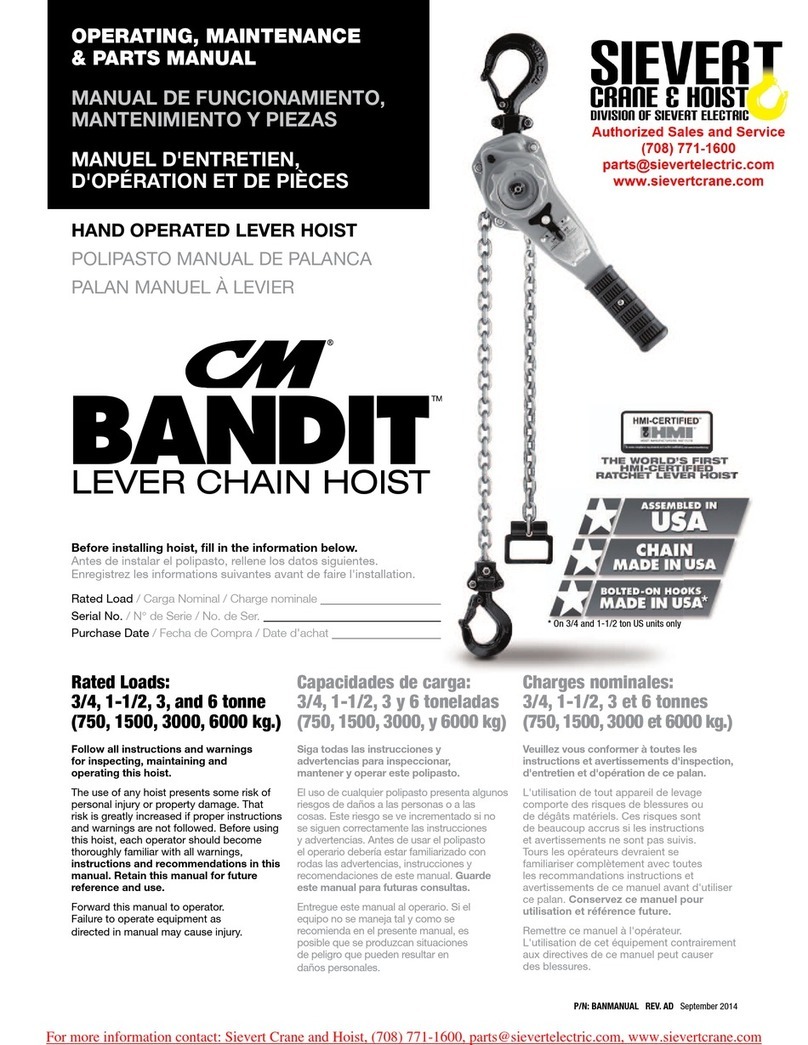
VCH – Type-1 Chain Hoist Manual – 010108
9
Replacing Load Chain
Never Add Sections of Load Chain ALWAYS replace the entire chain
Rotate hand chain wheel (2) until the narrow grooves of the load chain sprocket are visible
Feed a piece of flexible wire over the load chain sheave (10) and attach it to the open end of
the replacement load chain
Pull the chain into the load chain sheave (10), making sure that the welds face outwards
Rotate the hand chain wheel (2) in the up “U” direction (drawing the load chain through the
sheave); do not release the wire until the chain is exposed from the opposite side of the hoist
body
Insert the free end of the load chain (having removed the flexible wire) into the end anchor (17)
ensuring that the pin for end anchor (73) is inserted completely through the load chain
Then re-insert the split pin (72) into the load pin making sure to fold ends open the split pin
ends, preventing the load pin from being able to be worked loose
Attach the bottom hook to the open end (see below)
Attaching/Replacing Bottom Hooks (1/2T to 3T single fall hooks)
When replacing hooks or latches
only use NEW parts. NEVER
damaged components as their reliability/safety will be compromised
Insert the open end of the load chain into the hook slot located at the top of the bottom hook
assembly (making sure that the chain is not twisted)
Insert bottom hook assembly chain pin (33), ensuring that the pin is inserted completely
through the bottom hook assembly and the load chain
Tighten the nylon lock nut (74) until properly secured
Attaching/Replacing Bottom Hooks (5T double fall hooks)
Remove the split pin (72) from the end anchor (17) this will allow you to slide out the pin for
end anchor (73)
Then feed a piece of flexible wire into the load chain opening located at the top of the hook
assembly, under the idle sheave assembly (36) and out through the remaining opening at the
top of the hook assembly
Attach the wire to the load chain and pull it through the top hook assembly, making sure that
the welds face out
Insert the free end of the load chain (having removed the flexible wire) into the end anchor (17)
ensuring that the pin for end anchor (73) is inserted completely through the load chain
Then re-insert the split pin (72) into the load pin making sure to fold open the split pin
ends, preventing the load pin from being able to be worked loose
Hoists should always be recertified before being used after repair or alteration

